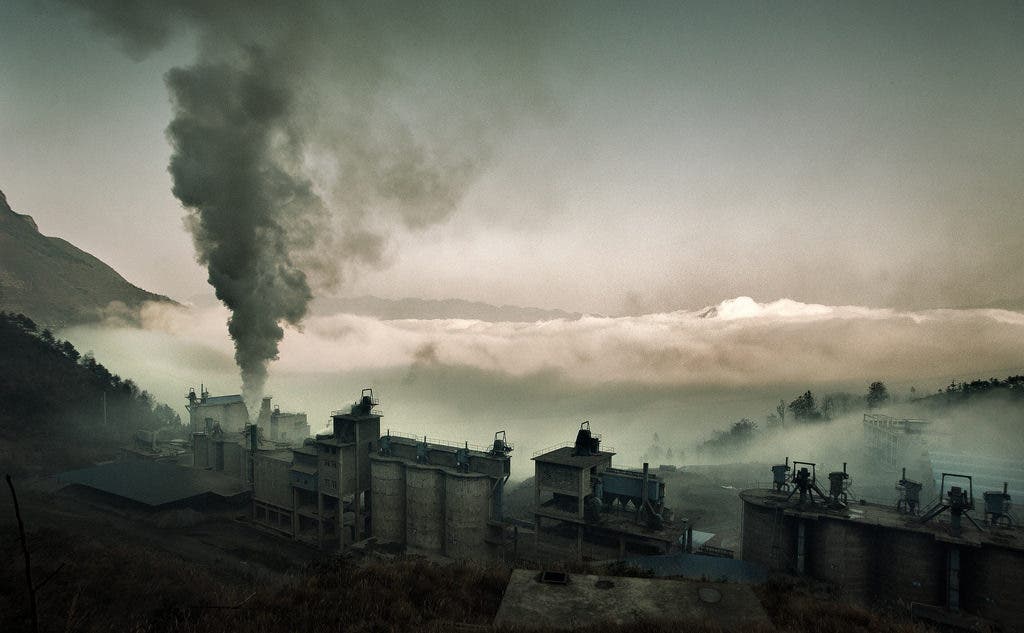The Chinese government has announced that its next Five Year Plan will aim to reduce greenhouse gas emissions, improve air and water quality, as well as increase the use of non-fossil power sources.

China has taken a leading role in renewable energy production, investment, and installation in recent years. The country, however, remains one of the most heavily polluted in the world, a result of rampant, decades-long industrial growth. Although China has repeatedly tried to break away from coal use, decoupling their economy from fossil fuel has proven problematic. It remains the single biggest consumer of coal in the world, making up just shy of half the global consumption. Even after declaring a “war on pollution” (which is definitely better than a war on drugs), hundreds of coal power plants were approved for construction in 2015 by local governments eager to strengthen their economies.
All this can be seen in the country’s notoriously poor air quality.
Speaking to the Chinese National People’s Congress on March 5, Premier Li Keqiang called for “heavy blows” against the country’s air and water pollution crisis. While he talked about measures which would improve environmental conditions across the board, Li focused in particular on those dealing with urban smog — the goal being to ensure “good air quality” day readings for 80% of the year. These targets will be part of China’s 13th Five Year Plan (FYP), which will guide the nation’s policy and economics up to 2021.
“Achieving green growth means reducing energy and resource intensity and decoupling the emissions of key pollutants from economic growth and urbanisation,” Li said.
He added that since the implementation of the previous Five-Year Plan, the service industry has grown considerably in China’s economy. This is reflected in a 18,2% drop in energy intensity per unit of GDP. By 2020, officials expect a further 15% decrease in this figure. So, economic planners decided to put a halt on new approvals for coal plants. Last month, the National Energy Administration froze construction works on several partly built plants across a dozen provinces.
Under the new FYP, coal consumption will be capped at 4.7 billion tons, with non-fossil fuel energy set to grow to 15% of China’s total capacity. The country will also guarantee that emissions peak no later than 2030, as per the Paris pact. An official nationwide carbon trading market is planned to launch next year.
The Premier also said that China is looking into limiting over-production in the most energy-hungry industries (such as construction and manufacturing) through corporate restructuring, but has not disclosed any details. Efforts in the last three years have led to the closure of “inefficient firms“, removing 90 million tonnes of steel production, 230 million tonnes of concrete production, over 76 million tonnes of plate glass, and 1 million tonnes of aluminium from China’s manufacturing sector — along with their energy needs.
Apart from the energy sector, Li said that water use per unit of GDP is predicted to fall by 23% and carbon intensity by 18% by 2020. The new plan will also provide local governments with the tools and targets to insure environmental protection in addition to their traditional roles of regulating markets, managing public services, and providing social welfare.
Along with the new targets set in the FYP, this could be the foundation of a cleaner, healthier China. The plan’s full details haven’t yet been fully fleshed out, but here is what we know so far:
[panel style=”panel-success” title=”Panel title” footer=””]
- Li’s speech indicated that the government will limit PM2.5 (tiny, harmful particulate matter), a major driver of air pollution, down by 25% from present standards. This is the first time PM2.5 standards have been included in a FYP.
- A reduction in emissions from coal burning and vehicles.
- Implementing cleaner and more efficient coal burning methods.
- Replacing coal with electricity and natural gas when possible.
- An increase in electrical energy production, with increased support for wind, solar, and bio power sectors.
- Promoting the use of waste straw as a resource.
- A reduction in field burning.
- Implementing control measures to deal with air pollution.
[/panel]
Was this helpful?



